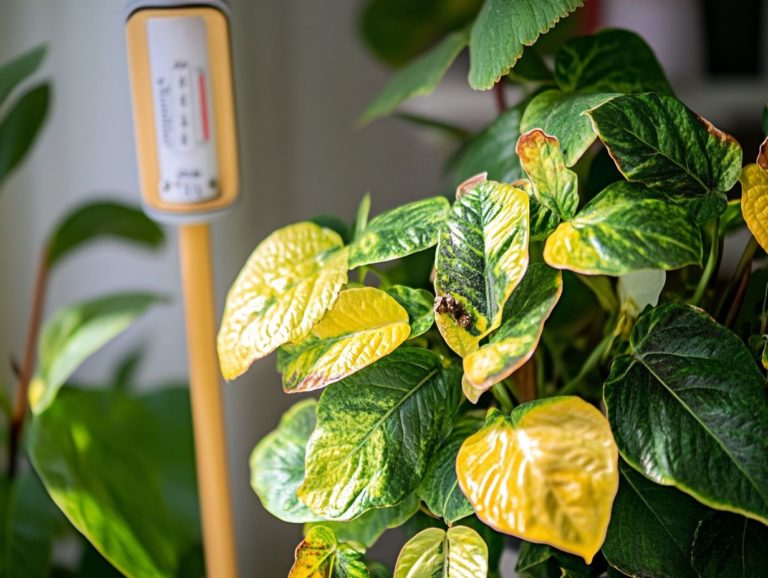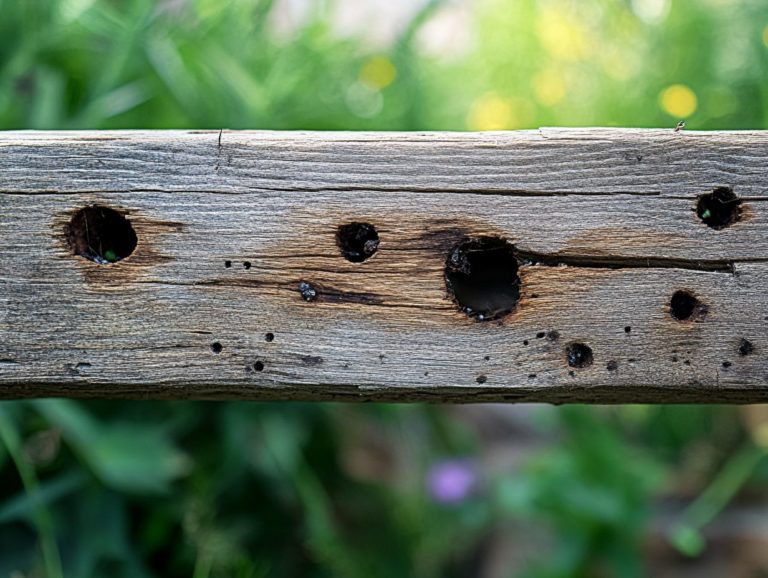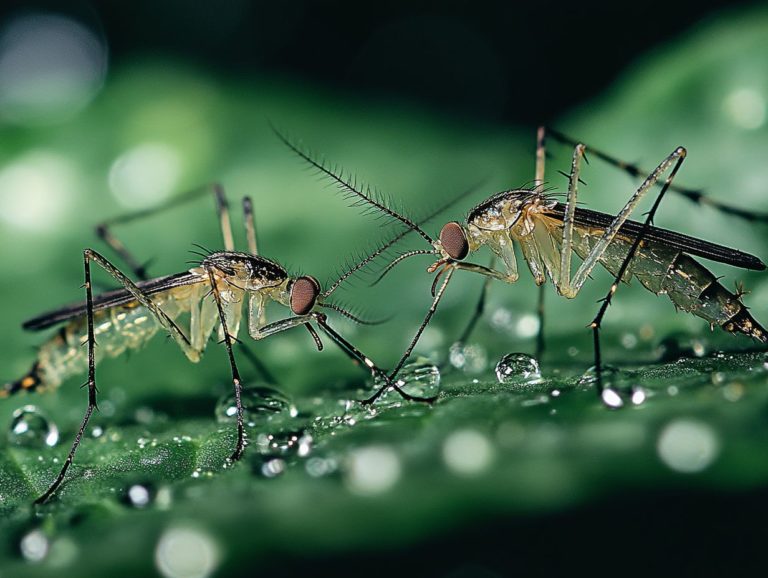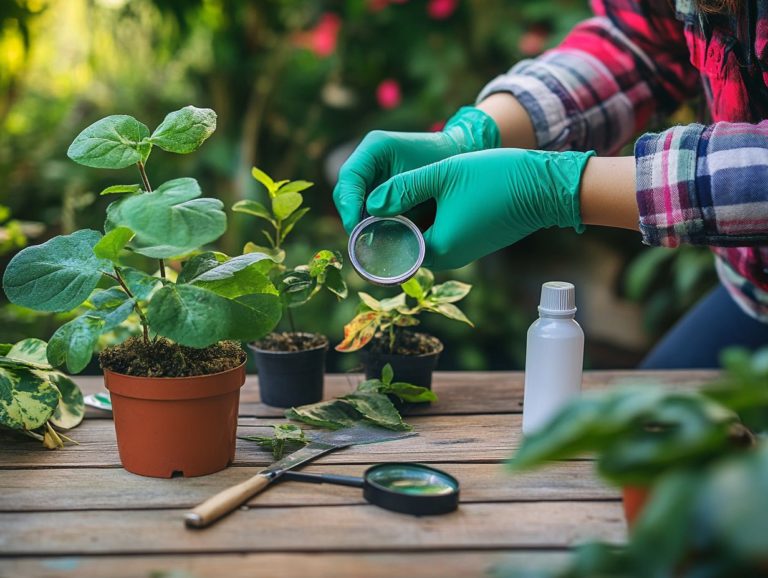The Role of Air Circulation in Pest Prevention
Maintaining a pest-free home requires more than just the usual traps and sprays. One essential factor, often overlooked, is proper air circulation. Effective airflow can dramatically influence pest infestations by fostering an environment that’s far less appealing to those unwanted guests. This ensures a healthy environment for your family.
In this article, you’ll explore how air circulation impacts pest behavior, identify common pests and their preferred living conditions, and receive practical tips to enhance airflow in your home. You’ll also discover how air purification can elevate your pest prevention efforts, improving indoor air quality and reducing pollutants.
With a few strategic adjustments, you can make a significant difference in keeping your space entirely pest-free!
Contents
- Key Takeaways:
- The Importance of Air Circulation in Pest Prevention
- Common Pests and Their Preferred Environments
- How to Improve Air Circulation in Your Home
- Using Air Circulation to Deter Pests
- The Role of Air Purification in Pest Prevention
- Frequently Asked Questions
- What is the role of air circulation in pest prevention?
- How does air circulation prevent pests from entering a building?
- Can air circulation alone prevent pest infestations?
- Why is proper ventilation important in pest prevention?
- How can I improve air circulation in my home or business?
- Are there any specific areas where air circulation is particularly important for pest prevention?
Key Takeaways:
- Air circulation plays a crucial role in preventing pest infestations by reducing moisture and eliminating favorable environments for pests, thus promoting better indoor air quality.
- Understanding the habits and preferences of common pests can enhance your pest management strategies by identifying areas of poor air circulation.
- Air purifiers effectively improve indoor air quality and reduce potential attractants for pests, ensuring that stale air does not linger in your living spaces.
The Importance of Air Circulation in Pest Prevention
Effective air circulation prevents pests effectively, significantly contributing to better indoor air quality and minimizing harmful pollutants. When you prioritize proper airflow, you facilitate the movement of fresh air throughout your home, fostering an environment that is less inviting to pests.
By ensuring adequate ventilation, you enhance not only your overall health and comfort but also protect your living spaces from unwanted intruders. Understanding airflow dynamics is crucial for making informed decisions about ventilation methods and pest management strategies, effectively safeguarding your loved ones.
How Air Circulation Affects Pest Infestations
Air circulation directly influences temperature and humidity levels in your space, affecting pest infestations. This creates conditions that can either deter or attract a variety of pests.
Lacking airflow can lead to humid and warm areas, prime breeding grounds for pests like mold mites and cockroaches, which thrive in stagnant environments. For example, cockroaches are notorious for their rapid reproduction in warm, damp conditions. Mold mites, drawn by high humidity, can damage food and other organic materials.
Effective ventilation systems do more than just circulate air; they distribute it evenly, lower humidity, and maintain cooler temperatures, ultimately disrupting the life cycles of these unwanted guests. Ensure your space is properly ventilated to make pest control less daunting and create a healthier, more comfortable environment.
Common Pests and Their Preferred Environments
Understanding common pests and their preferred environments is crucial for effective pest management. Different species thrive under specific conditions, influenced by factors like indoor air quality, humidity, and temperature levels.
Certain insects flourish in warm, humid spaces, while others prefer cooler, drier areas. Take action now to enhance airflow and keep pests at bay by identifying these environments, thus protecting your home and family.
A solid grasp of pest behavior and preferences lays the groundwork for a comprehensive pest control strategy that integrates environmental management and effective ventilation. Implement these tips today to maintain a pest-free home!
Understanding the Habits and Preferences of Pests

Understanding the habits and preferences of pests is essential for effective pest management. These creatures often display specific behaviors influenced by environmental conditions such as airflow, humidity, and temperature.
Rodents tend to gravitate toward nesting in areas with high moisture. They often seek out hidden corners or damp basements that lack proper ventilation.
These environments suit them perfectly, as the humidity aligns with their dietary needs and helps them breed quickly. This can lead to increased pest populations.
Excess humidity can attract insects like cockroaches and silverfish, which thrive on organic materials that might flourish in such conditions.
By enhancing airflow and controlling humidity levels in your home, you can create an environment that is far less inviting to these pests, improving overall family health. This proactive approach significantly reduces their nesting and feeding activities, leading to a more comfortable living space.
How to Improve Air Circulation in Your Home
Imagine a home where fresh air flows freely! Enhancing air circulation is crucial for elevating indoor air quality and maintaining a pest-free sanctuary. Consider effective methods such as using fans, opening windows, and investing in a quality ventilation system.
These approaches promote better airflow and help to reduce humidity levels, thereby minimizing the risk of pest infestations. By embracing these strategies, you can cultivate a healthier living environment that deters pests and ensures a refreshing breeze flows through your home all year round.
Tips for Improving Air Flow and Reducing Moisture
To enhance airflow and reduce moisture in your home, consider implementing effective strategies such as utilizing fans, ensuring proper window operation, and optimizing your ventilation system. These steps can significantly elevate your indoor air quality and minimize pollutants.
Position fans in strategic locations. For example, face them toward windows to draw in fresh air or direct airflow toward damp areas to prevent the stagnation of stale air.
This consistent circulation helps combat humidity and can significantly reduce pest issues. In kitchens and bathrooms, using exhaust fans is essential, as these spaces tend to accumulate heat and moisture quickly. These fans help remove heat and moisture, enhancing the overall air quality in your home.
Check that all windows are properly sealed to prevent drafts while maximizing their ability to open and close as needed. The importance of maintaining effective air circulation cannot be overstated; it lowers moisture levels and plays a vital role in deterring pests. Additionally, understanding the role of cleanliness in pest prevention contributes to a healthier living environment.
Using Air Circulation to Deter Pests
Effectively utilizing air circulation can serve as a formidable strategy in deterring pests. Proper airflow establishes an environment that is less inviting to a range of insects and rodents.
By ensuring adequate ventilation and incorporating pest-repelling measures such as insect screens, you can significantly diminish the chances of infestations, creating a healthier living space for your family.
By grasping how air movement impacts pest behavior, you enable yourself to develop superior pest management strategies that prioritize both comfort and safety.
Are pests invading your home? Start improving your home’s airflow today for a healthier and more comfortable living space!
Strategies for Keeping Pests Away

Effective strategies for keeping pests at bay often hinge on the power of air circulation. A well-ventilated home not only discourages infestations but also fosters a healthier living environment by improving indoor air quality.
You should prioritize proper airflow by utilizing exhaust fans in your bathrooms and kitchens, while strategically placing vents throughout your home. Maintaining optimal humidity levels is essential, as many pests thrive in moist conditions, which can lead to increased pest populations. Consider using dehumidifiers in particularly damp areas to create an unwelcoming atmosphere for these unwanted guests.
Regularly checking for leaks and sealing any gaps will further bolster your defenses against pesky intruders. Working with pest control experts can offer tailored solutions specific to your situation. Implementing routine maintenance practices, like cleaning gutters and trimming overgrown plants, will enhance your home s resilience against pests.
The Role of Air Purification in Pest Prevention
Air purification significantly contributes to pest prevention by enhancing indoor air quality and eliminating pollutants that might attract insects and other pests. By utilizing advanced HVAC systems and air purifiers, you can cultivate a cleaner, healthier environment that is less inviting to infestations.
Integrating air purification techniques into your pest management strategies allows you to elevate your living conditions while safeguarding your home from pest-related challenges.
How Air Purifiers Can Help in Pest Control
Discover how different types of air purifiers can transform your pest control strategy by effectively removing indoor pollutants that tend to attract pests, thereby enhancing your overall indoor air quality.
Different types of air purifiers operate through a variety of mechanisms. For instance, HEPA filters excel at trapping allergens and particulate matter, while activated carbon filters work to neutralize odors that can be particularly enticing for insects. Mercury and ozone-based purifiers also target volatile organic compounds, which are harmful substances released from everyday items like paints and cleaners that attract pests. When integrated with high-performance filters in HVAC systems, these standalone purifiers work together to ensure consistent air circulation and filtration throughout your space.
By improving air quality, you not only disrupt the environments that pests thrive in but also help reduce their reproduction rates. While air purification is a valuable tool in pest management, it should be part of a broader strategy that includes proper sanitation and regular inspections to create a more comprehensive and effective approach.
Frequently Asked Questions
-
What is the role of air circulation in pest prevention?
-
Air circulation plays an important role in pest prevention by creating an environment that is not conducive to pest infestations. Proper air circulation helps to reduce moisture, eliminate food sources, and disrupt pest breeding cycles.
-
How does air circulation prevent pests from entering a building?
-
By keeping air moving, it creates a barrier that makes it difficult for pests to enter a building. This can be achieved through the use of fans, vents, and open windows and doors.
-
Can air circulation alone prevent pest infestations?
-
No, air circulation is just one aspect of pest prevention. It must be combined with other measures such as proper sanitation, sealing of entry points, and regular pest control treatments to effectively prevent pests.
-
Why is proper ventilation important in pest prevention?
-
Proper ventilation helps to reduce moisture levels, which can attract pests. It also helps to disperse scents and odors that may attract pests, making it less likely for them to enter a building.
-
How can I improve air circulation in my home or business?
-
You can improve air circulation by regularly cleaning air vents, using fans or air purifiers, and keeping doors and windows open when weather permits. It is also important to fix any leaks or moisture issues to prevent pests.

Start implementing these strategies now for a pest-free home!
Are there any specific areas where air circulation is particularly important for pest prevention?
Absolutely! Kitchens, bathrooms, basements, and attics are hotspots for pest infestations.
These areas attract pests due to moisture and food sources. Keeping air circulating can be your best defense against unwanted visitors!






